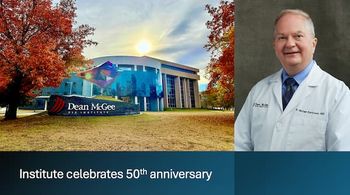
New corneal imaging superior?
Placido corneal topography is established technology for corneal imaging, but whether it is the best diagnostic technique to detect forme fruste keratoconus when screening refractive surgery candidates is a matter of debate.
Orlando-Placido corneal topography is established technology for corneal imaging, but whether it is the best diagnostic technique to detect forme fruste keratoconus (FFKC) when screening refractive surgery candidates is a matter of debate.
In a point/counterpoint presentation, Stephen D. Klyce, PhD, argued there is no better alternative for the accurate detection of FFKC than Placido-based topography. Providing an alternate view, Michael W. Belin, MD, explained why he considers tomographic evaluation with Scheimpflug imaging the superior modality.
According to Dr. Klyce, one simple fact makes Placido topography the better screening technique for FFKC, and that is Placido measurement of anterior corneal curvature is 20 times more sensitive than a Scheimpflug technique.
“The claim that the first sign of keratoconus occurs at the posterior surface of the cornea is patently false, as understood by the fact that corneas developing ectasia after refractive surgery typically do not have abnormal posterior floats preoperatively,” said Dr. Klyce, adjunct professor of ophthalmology, Mount Sinai School of Medicine, New York.
“The earliest changes in corneal shape associated with FFKC are localized areas of steepening on the corneal surface, and in order to screen for FFKC, you must be able to measure and display these subtle changes in corneal curvature,” he added.
Defending his position on the use of Scheimpflug imaging, Dr. Belin explained that Placido technology provides information on the anterior surface of the cornea only, whereas Scheimpflug imaging has the advantage of being able to measure the posterior and anterior corneal surfaces and gives a full pachymetric map. He is professor of ophthalmology and vision science, University of Arizona Health Sciences, Tucson.
The extra information provided by Scheimpflug imaging is important because at times, posterior surface alterations can occur without changes on the anterior surface, Dr. Belin said.
He showed evidence, including evidence of cases and study results where eyes with subclinical keratoconus were misclassified as normal according to anterior curvature analysis but were diagnosed correctly based on abnormalities of the posterior surface and in pachymetric distribution.
“Keratoconus is a progressive disease of cornea thinning and anterior steepening, and the only way these changes can coexist is if the posterior surface moves,” Dr. Belin said.
“Surface-only analysis has been abandoned in all areas of medicine and other areas of ophthalmology have also embraced tomography,” he continued. “Now it is time to look below the anterior surface to see the true extent of pathology in the cornea. To diagnose early keratoconus, we need to look for pathologic changes on the posterior surface, look at the pachymetric progression graphs, and relational thickness, and realize that anterior curvature changes are a late finding.”
For more articles in this issue of Ophthalmology Times Conference Brief
Newsletter
Don’t miss out—get Ophthalmology Times updates on the latest clinical advancements and expert interviews, straight to your inbox.


















































.png)


